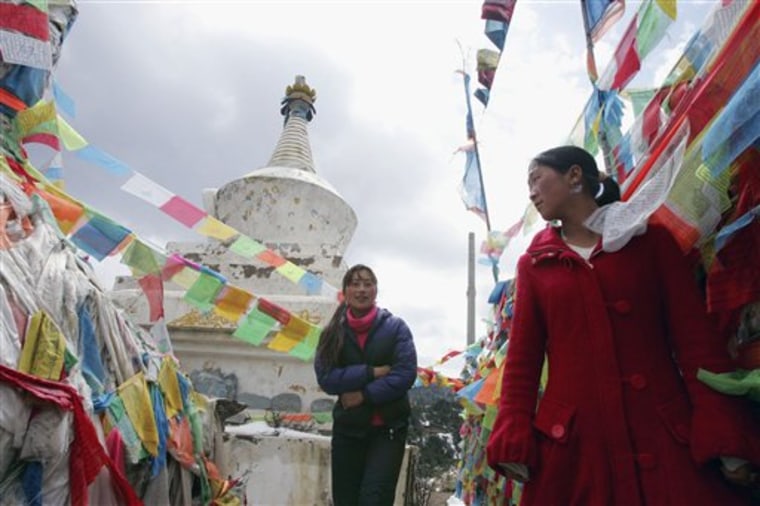A clash between protesters and police in western China has left at least two people dead, state media and a rights group said Tuesday.
A top Chinese police official also called for stepped-up "patriotic campaigns" in Tibet to boost support for Beijing.
The demonstration in Garze, a predominantly Tibetan prefecture in Sichuan province, started Monday as a peaceful march by monks and nuns but grew violent when armed police tried to suppress the crowd, which ballooned to about 200 after residents joined in, the India-based Tibetan Center for Human Rights and Democracy said.
It said an 18-year-old monk was killed and a 30-year-old monk was critically injured when security agents fired into the gathering.
China's official Xinhua News Agency said the protesters attacked police with knives and stones, killing one policeman and injuring several others.
"The police were forced to fire warning shots, and dispersed the lawless mobsters," Xinhua quoted an unidentified local official as saying. The agency did not say whether any civilians were injured.
It was not possible to immediately confirm either claim. Officials who answered telephone calls Tuesday at police and government offices in Garze either denied anything had happened or said they had not heard of such reports.
Garze borders Tibet, where several days of anti-government protests led by monks spiraled into violence on March 14 in the capital, Lhasa. Demonstrations in support of the Lhasa protests have since spread through provinces surrounding Tibet.
Protests anger Beijing
The protests, the largest and most sustained in almost two decades, have embarrassed and angered Beijing, which has dispatched thousands of troops to ratchet up security and prevent new conflicts. China says at least 22 people have died in Lhasa while Tibetan exile groups say nearly 140 Tibetans were killed, including 19 in Gansu province.
The unrest has also cast a spotlight on China's human rights record ahead of the Aug. 8-24 Beijing Olympics, which has been a great source of Chinese national pride.
Meng Jianzhu, the minister of public security, ordered Tibet's security forces to remain on alert for further unrest and said "patriotic education" campaigns would be strengthened in monasteries, according to the Tibet Daily newspaper.
'Evil designs'
"The Dalai clique refuse to give up their evil designs, and even in their death throes are planning new acts of sabotage," Meng was quoted as saying Monday during a visit to Lhasa, referring to Tibetan spiritual leader the Dalai Lama and his supporters.
Meng was the first high-level central government official to visit since the March 14 riots.
Unrest among Tibet's Buddhist clergy has been blamed in part on compulsory "patriotic education" classes, widely reviled by monks for cutting into religious study and forcing them to make ritual denouncements of the Dalai Lama, who fled to India in 1959 after a failed uprising against Chinese rule.
Despite such complaints -- and repeated government claims that all Tibetans support the Chinese government's stance -- Meng said the campaign should be broadened as part of efforts to "grasp and direct public opinion in the correct direction."
China has banned foreign journalists from traveling to the protest areas, making it extremely difficult to verify any information.
